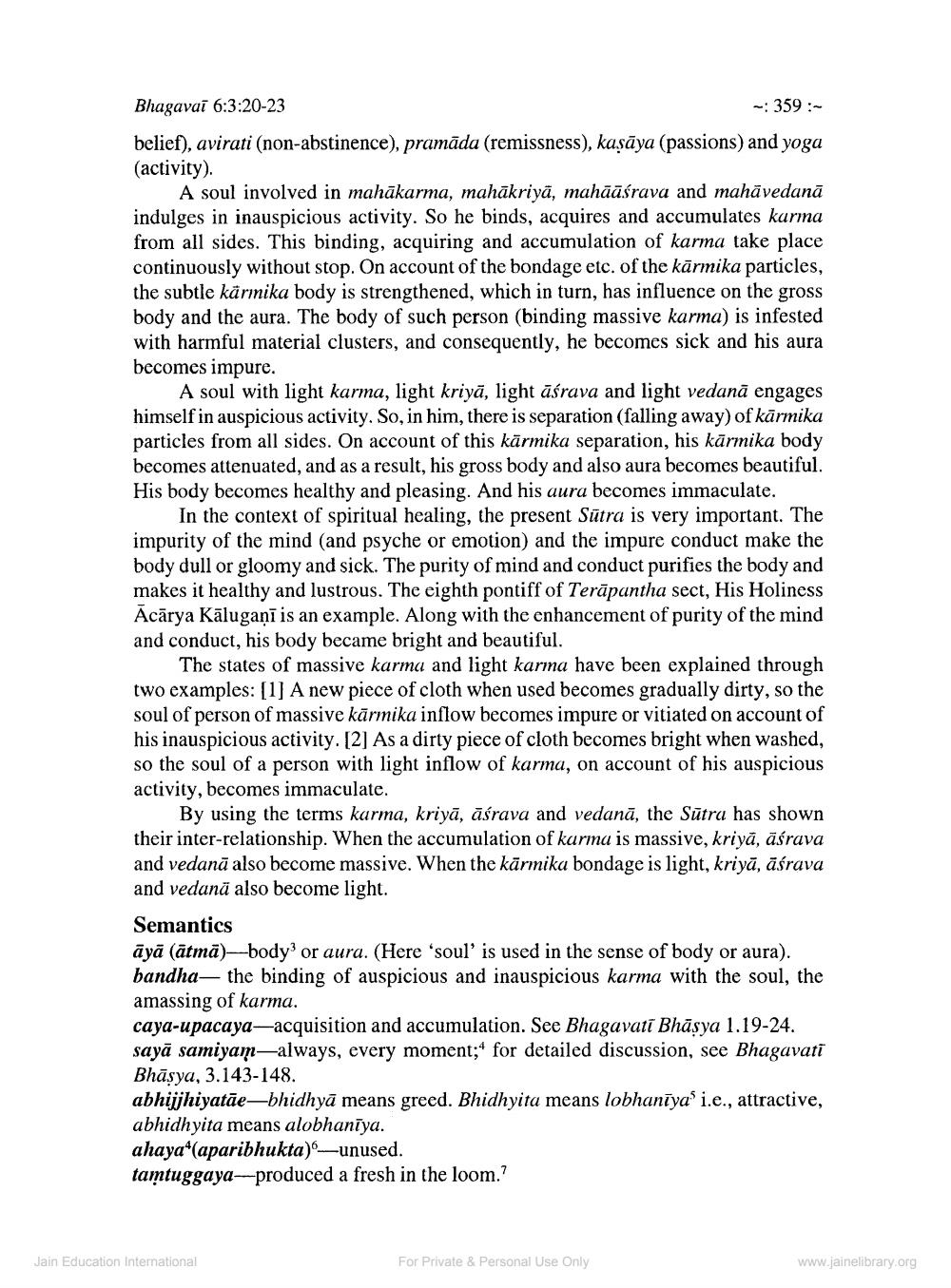________________
Bhagavai 6:3:20-23
-: 359:belief), avirati (non-abstinence), pramāda (remissness), kaşāya (passions) and yoga (activity).
A soul involved in mahākarma, mahākriyā, mahāāśrava and mahāvedanā indulges in inauspicious activity. So he binds, acquires and accumulates kurma from all sides. This binding, acquiring and accumulation of karma take place continuously without stop. On account of the bondage etc. of the kārmika particles, the subtle karmika body is strengthened, which in turn, has influence on the gross body and the aura. The body of such person (binding massive karma) is infested with harmful material clusters, and consequently, he becomes sick and his aura becomes impure.
A soul with light karma, light kriyā, light āśrava and light vedanā engages himself in auspicious activity. So, in him, there is separation (falling away) of kārmika particles from all sides. On account of this kārmika separation, his kārmika body becomes attenuated, and as a result, his gross body and also aura becomes beautiful. His body becomes healthy and pleasing. And his aura becomes immaculate.
In the context of spiritual healing, the present Sūtra is very important. The impurity of the mind (and psyche or emotion) and the impure conduct make the body dull or gloomy and sick. The purity of mind and conduct purifies the body and makes it healthy and lustrous. The eighth pontiff of Terāpantha sect, His Holiness Ācārya Kālugani is an example. Along with the enhancement of purity of the mind and conduct, his body became bright and beautiful.
The states of massive karma and light karma have been explained through two examples: [1] A new piece of cloth when used becomes gradually dirty, so the soul of person of massive kārmika inflow becomes impure or vitiated on account of his inauspicious activity. [2] As a dirty piece of cloth becomes bright when washed, so the soul of a person with light inflow of karma, on account of his auspicious activity, becomes immaculate.
By using the terms karma, kriyā, āśrava and vedanā, the Sūtra has shown their inter-relationship. When the accumulation of karma is massive, kriyā, āśrava and vedanā also become massive. When the kārmika bondage is light, kriyā, āśrava and vedanā also become light. Semantics āyā (ātmā)—body or aura. (Here 'soul is used in the sense of body or aura). bandha— the binding of auspicious and inauspicious karma with the soul, the amassing of karma. caya-upacaya-acquisition and accumulation. See Bhagavati Bhāsya 1.19-24. sayā samiyam-always, every moment;4 for detailed discussion, see Bhagavati Bhāsya, 3.143-148. abhijjhiyatāe-bhidhyā means greed. Bhidhyita means lobhanīya' i.e., attractive, abhidhyita means alobhaniya. ahaya*(aparibhukta)-unused. tamtuggaya---produced a fresh in the loom.?
Jain Education International
For Private & Personal Use Only
www.jainelibrary.org




